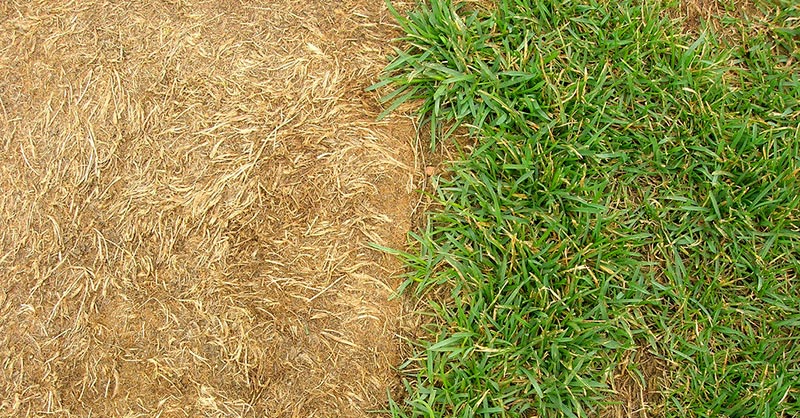
Fertilizing, watering, and mowing are the usual steps to take for a healthy lawn, but sometimes things can go awry. Unsightly weedy and brown patches can show up on your lawn and seriously undermine your home’s curb appeal. Dealing with a damaged lawn can be a frustrating experience for homeowners. No matter how much water or fertilizer you apply, it can seem nearly impossible to get your lawn back to its thick, green splendor.
If it’s any consolation, you have plenty of company with your lawn care woes. Take a drive around your neighborhood and you will find that many homeowners with lawns don’t have a handle on proper lawn care or how to get rid of weeds. So if your lawn is looking a little worse for wear, get it back into shape with these tips.
Get rid of weeds
If you see a weed, pull it out by hand, making sure to remove the root. A regular weeding routine for the garden prevents weeds from multiplying and reseeding. Applying a layer of mulch also helps stop weeds from growing in the garden. Make sure the mulch is seed-free in order not to introduce new weeds into the garden.
Pull test on brown patches
Brown patches on your lawn could mean you’re dealing with drought stress, or more serious problems like pests or fungus. Pull out a few blades of grass, and examine the roots for signs of insect root eaters or whitish branchlike structures, which can point to fungi growth. The most common garden and turf grass diseases are caused by fungi. Examples are powdery mildews, dollar spot, leaf spots, and rust. If the lawn or garden is well watered, fertilized, and drained, these diseases should be rare.
Perform a soil test
A good way to gauge what you’re dealing with is to get a DIY kit to test the pH level of your soil. This test is available at most garden centers. It is important to determine nutrient and pH state of your soil regularly, because grasses do not fare well in acidic soil conditions. If soil is acidic, with a pH of less than 7, lime can be added to the soil following the manufacturer’s instructions.
Reseed bare areas
Notice any patches on your lawn? They’re likely due to heavy traffic or insect or disease problems. The good news is those small spots of bare lawn can be reseeded. Before repairing patches, aerate the lawn wherever there is compaction and apply compost or starter fertilizers to help lawn growth. When covering patches with topsoil and seed, gently water the area with a garden hose, taking care not to wash off the seeds.
To maintain adequate moisture until grass seedlings germinate and are well rooted, it’s important to water reseeded or sodded areas. Water your lawn adequately early in the morning or evening to avoid dry spells or wet spells. This will help it grow healthy and improve resiliency to pests and future damage.




